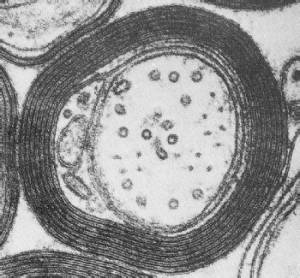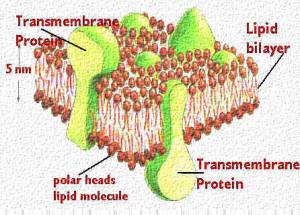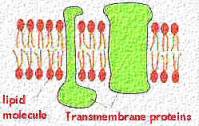| Section categories |
|
Related Subjects [38]
This category includes brief overview of all related subjects.
|
|
Defining BioInformatics [7]
In this section we tried to briefly explain what bioinformatics is ?
|
|
Unviersities [30]
This contains information about universities that are offering bioinformatics degree programs.
|
|
Resources [24]
Contains information about bioinformatics resources including databases, tools and techniques.
|
|
Algorithms [31]
This category includes some of the basic algorithms that are usually used by bioinformaticians.
|
|
| Statistics |
Total online: 1 Guests: 1 Users: 0 |
|
Home » 2011 » June » 17 » Membrane Structure
8:48 PM Membrane Structure |
Membrane Structure
Basic Membrane Architecture
The purpose of this presentation will be to show how membranes are studied by the cell biologist. First, we will look at basic unit membrane architecture. All membranes contain proteins and lipid. However, the proportion of each varies depending on the membrane. For example: - Myelin, which insulates nerve fibers, contains only 18% protein and 76% lipid. A electron micrograph of myelin is to the right.
- Mitochondrial inner membrane contain 76% protein and only 24% lipid.
- Plasma membranes of human red blood cells and mouse liver contain nearly equal amounts of proteins (44, 49% respectively) and lipids (43, 52% respectively).
 | Considering what you already know about these cells or organelles, what would be the significance of these different proportions of lipids and proteins? |
 | As we said above, membrane architecture is that of a lipid bilayer. The lipids are amphipathic in that they have hydrophilic polar heads pointing out and the hydrophobic portion forming the core. |
Proteins are embedded in the bilayer. They may pass through the bilayer ( as transmembrane proteins), or they may be inserted at the cytoplasmic or exterior face.
| A cross section of the bilayer is seen in this figure. As we will see in more detail below, the lipid molecules have a globular (polar) head and a straight region (non-polar). Each row of lipids is a leaflet. Therefore, the plasma membrane consists of two leaflets with the non-polar regions pointing inward. |  |
|
|
|
Category: Related Subjects |
Views: 1400 |
Added by: Ansari
| Rating: 0.0/0 |
|
|
|




